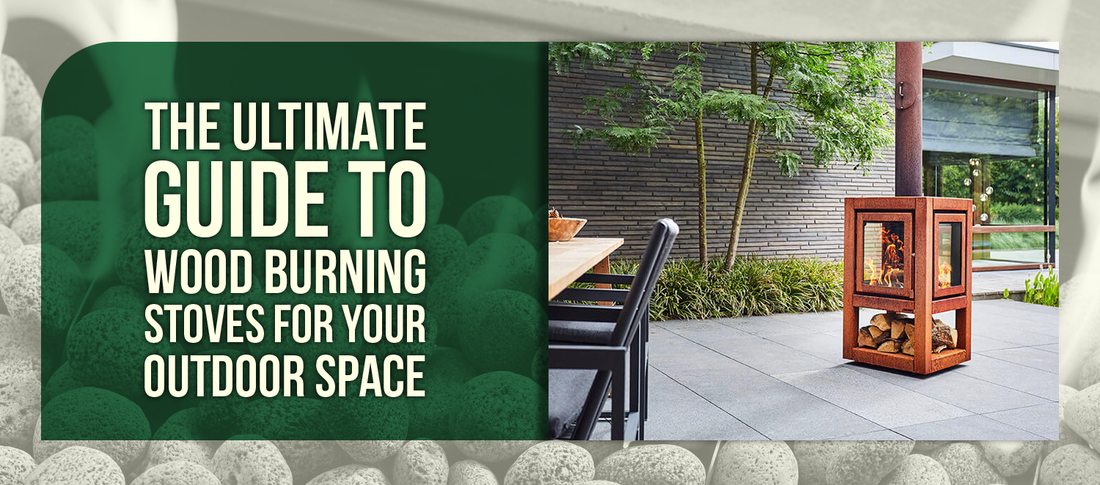
The Ultimate Guide to Wood Burning Stoves for Your Outdoor Space
Master the art of lava rock placement for optimal heat distribution, safety, and stunning visual appeal in your gas fire pit setup
Transform Your Gas Fire Pit with Professional Lava Rock Arrangement
Proper lava rock placement enhances heat efficiency, protects your fire pit components, and creates beautiful flame patterns. Learn the professional techniques for optimal results that will elevate your outdoor experience.

Key Takeaways
Essential principles for successful lava rock arrangement and maintenance
Heat Distribution
Properly arranged lava rocks distribute heat evenly across your fire pit, maximizing warmth output while protecting burner components. Strategic placement creates optimal air circulation for efficient combustion and flame performance.
Component Protection
Lava rocks shield gas burners from debris, moisture, and direct weather exposure. This protective layer extends equipment life and prevents costly repairs while maintaining consistent gas flow and ignition reliability.
Visual Enhancement
Thoughtful rock arrangement creates stunning visual effects as flames dance through the volcanic material. Natural textures and earth tones complement any outdoor decor while hiding mechanical components for a seamless look.
Equipment Needed to Arrange Lava Rocks in a Gas Fire Pit
Gather these essential tools and materials before beginning your installation
Required Tools and Materials
Safety Equipment
Work gloves, safety glasses, and dust mask for handling lava rocks safely
Cleaning Supplies
Garden hose, soft brush, and mild detergent for pre-installation cleaning
Measuring Tools
Tape measure and level to ensure proper spacing and depth placement
Quality Lava Rocks
Food-grade volcanic rock sized appropriately for your fire pit diameter
Optional Enhancements
Fire glass accents, decorative stones, or ceramic logs for visual variety
Maintenance Kit
Small shovel or scoop for future rearrangement and seasonal cleaning
Preparing the Gas Fire Pit
Essential preparation steps ensure safe and effective lava rock installation
Pre-Installation Preparation Process
Turn Off Gas Supply
Shut off gas at both the fire pit control valve and main supply line. Allow any residual gas to dissipate completely before beginning work. Ensure no open flames or ignition sources are nearby during preparation.
Remove Existing Materials
Clear out old lava rocks, debris, leaves, or any foreign objects from the fire pit bowl. Check for damaged components or loose connections that require attention before adding new materials.
Clean Fire Pit Components
Thoroughly clean the fire pit bowl, burner assembly, and control components. Remove dust, corrosion, or buildup that could affect performance. Inspect burner ports for clogs or damage.
Test Gas Connections
Apply soapy water solution to all gas connections and fittings. Look for bubbles indicating leaks that must be repaired before proceeding. Replace any worn seals or damaged components.
Check Drainage and Ventilation
Ensure proper drainage holes are clear and functional. Verify adequate ventilation around the fire pit for safe operation. Address any blockages that could affect performance or safety.
Cleaning the Gas Fire Pit
Thorough cleaning ensures optimal performance and longevity of your fire pit system
Deep Cleaning Process
Remove all loose debris and wash the fire pit bowl with warm soapy water. Use a soft brush to scrub away stubborn buildup without damaging surfaces. Rinse thoroughly and allow complete drying before proceeding with rock installation.
Component Inspection
While cleaning, inspect burner ports, control valves, and gas lines for wear or damage. Clean burner ports with compressed air or fine wire to ensure proper gas flow. Replace any components showing corrosion or deterioration.
Safety During Cleaning
Never use harsh chemicals or abrasive materials that could damage gas components. Avoid getting water in gas lines or control mechanisms. Ensure complete drying before reconnecting gas supply to prevent corrosion and operational issues.
Choosing the Right Lava Rocks
Select appropriate lava rock size, quantity, and quality for your specific fire pit
Lava Rock Size Selection Guide
Quantity Calculation
Calculate approximately 1-2 inches of lava rock depth across your fire pit surface. A 36-inch fire pit typically requires 15-20 pounds of lava rock for proper coverage. Always purchase 10% extra for future replacement needs.
Quality Considerations
Choose natural volcanic lava rock over artificial alternatives for superior heat retention and durability. Avoid painted or treated rocks that can release harmful chemicals when heated. Food-grade certification ensures safety for cooking applications.
Aesthetic Options
Consider color variations from deep black to reddish-brown for visual interest. Some lava rocks feature natural holes and textures that create unique flame patterns. Mix sizes for natural randomness that mimics volcanic landscapes.
Types of Lava Rocks for Gas Fire Pits
Understanding different lava rock varieties helps you choose the best option
Classic Black Lava Rock
Traditional choice offering excellent heat retention and neutral appearance that complements any design. Black lava rock maintains its color well over time and provides consistent performance across temperature ranges.





